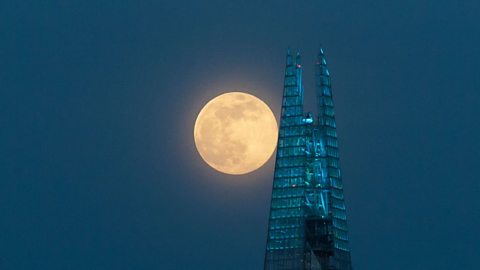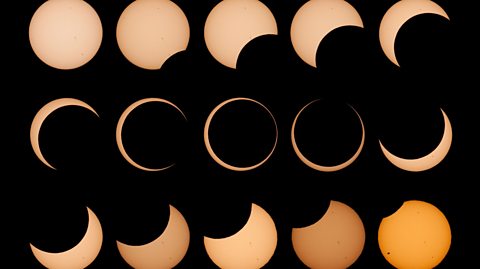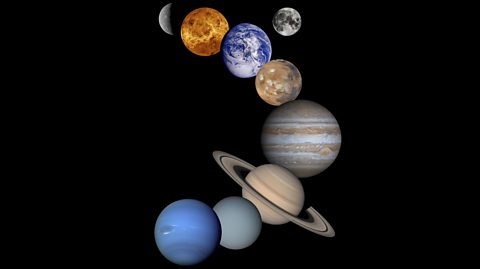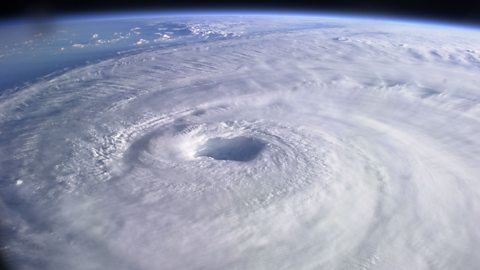While nearly all of our plans here on Earth have been cancelled, thereвАЩs plenty going on in space to look forward to.
We worked with the Royal Astronomical Society to bring you some of the most exciting events to look forward to over the coming months. You wonвАЩt even need equipment to see most of them - just a keen eye and a window to gaze out of.


7 May: Full supermoon
If the sky is clear, youвАЩll be able to see the last of 2020вАЩs supermoons.

A supermoon is when the Moon is at its closest point of its orbit round Earth, so it looks slightly larger and brighter than normal. You donвАЩt need any equipment to see this, so keep an eye out!
23 May: Comet Atlas
This oneвАЩs a bit of a sad story. The comet was discovered in December 2019 and it was extremely exciting stuff, as astronomers hoped it would be visible to the naked eye in May. This doesnвАЩt happen very often with comets.
Unfortunately, recent images have shown itвАЩs breaking up faster than expected as it hurtles towards Earth, so itвАЩs not going to be as bright as scientists hoped. If you have some astronomy equipment, you might still be able to see it, though!
End May: Comet Swan
This was discovered on 11 April this year by an amateur astronomer looking at images from the SOHO satellite. ItвАЩs hopefully going to be quite bright by the end of the month - but watch this space.


21 June: Annular eclipse

Although you wonвАЩt be able to see this from the UK, itвАЩs a pretty special event.
Purely by coincidence, the Sun and Moon appear roughly the same size when we look in the sky because of their actual sizes and relative distances to Earth. ItвАЩs all about perspective.
Sometimes during an eclipse the Moon will cover the Sun entirely, but when itвАЩs a bit further away in its orbit during an annular eclipse, it leaves a narrow ring of sunlight around the lunar silhouette.
People in the Democratic Republic of Congo, South Sudan, southern China and others will be able to see it, so look out for pictures in the news and on social media. However, itвАЩs important to never look at the Sun directly, even during an eclipse - it is only safe to view through projection with a telescope or pinhole camera, or using a certified safe solar filter.


13-14 July: Jupiter reaches opposition with the Sun
Opposition literally means when a planet is directly opposite the Sun, when seen from Earth. This makes it more visible to us in the sky, and so is a great time to capture some snaps of it.
13 and 14 July is when this happens for Jupiter but it will be visible to the naked eye for months either side of this. While you wonвАЩt need equipment to see the gas giant, a pair of binoculars help you see the four largest Moons (the Galilean Moons), and that Jupiter appears to be disk shaped. Jupiter has the appearance of a squashed circle, because its upper layers are gas, and it rotates so fast that its equator bulges out. A small telescope shows details like cloud belts.
Capturing Jupiter on a smartphone in a starfield will be fairly easy, but getting anything other than a dot will need a long telephoto lens or telescope. One problem for the UK is Jupiter will be low down in the sky, so youвАЩll need a clear southern horizon to see it well.
20 July: Saturn reaches opposition with the Sun
 Image source, NASA & STScI
Image source, NASA & STScIItвАЩs not just Jupiter that will get its moment in the Sun (as it were). In July Saturn will also reach opposition, but it will be visible for months either side of this date. Jupiter and Saturn are actually fairly close together in the sky.
You will be able to see Saturn without equipment, but good binoculars should help you see its largest moon Titan. YouвАЩll need a telescope to see the planetвАЩs famous rings.
28-29 July: Delta Aquarids meteor shower
A meteor is a bit of space rock that enters the EarthвАЩs atmosphere. The resistance of the air on the rock makes it really hot, so it burns and this is why you can see it light up in the sky. This particular shower is connected to debris from HalleyвАЩs Comet, which last came close to the Sun (and Earth) in 1986 and will return in 2061.
The Delta Aquarids shower runs every year from July 12 - August 23, but this is its peak. The peak is at the same time (more or less) every year. The crucial difference this year is that the Moon wonвАЩt interfere, so people in rural areas will get a better view. It will definitely be easier to see in areas with less light pollution but it wonвАЩt impossible to see in more built up areas, like inner cities.
YouвАЩll need patience for this one though, as itвАЩs expected that as few as five meteors per hour will be visible from the UK.


Summer months: the Summer Triangle
Lastly, a bonus you can see throughout all three months. The three bright stars Vega, Deneb and Altair make up the Summer Triangle, which marks the constellations of the summer months.
ItвАЩs easy to spot, even from cities. You wonвАЩt need special equipment to see it, and it should be easy to capture with a smartphone without zooming in at all.
Here's how: Look for the brightest star in your eastern sky. ThatвАЩs Vega, the brightest star in the constellation Lyra the Harp.
Look to the lower left of Vega for another bright star вАУ Deneb, the brightest in the constellation Cygnus the Swan and the third brightest in the Summer Triangle. They are about a hand length apart, if you stretch your arm out and hold it up against the sky.
Look to the lower right of Vega to locate the Summer TriangleвАЩs second brightest star. ThatвАЩs Altair, the brightest star in the constellation Aquila the Eagle. Altair and Vega are further apart than Vega and Deneb are, more like a 30cm ruler length apart, again if you stretch your arm out.
Ten things you didn't know about our Solar System
You'll be a star student once you've read this!

Five things we get wrong about space
Forget everything you thought you knew about space and read this.

What on Earth can we see from space?
Spoiler alert: it's not the Great Wall of China...
